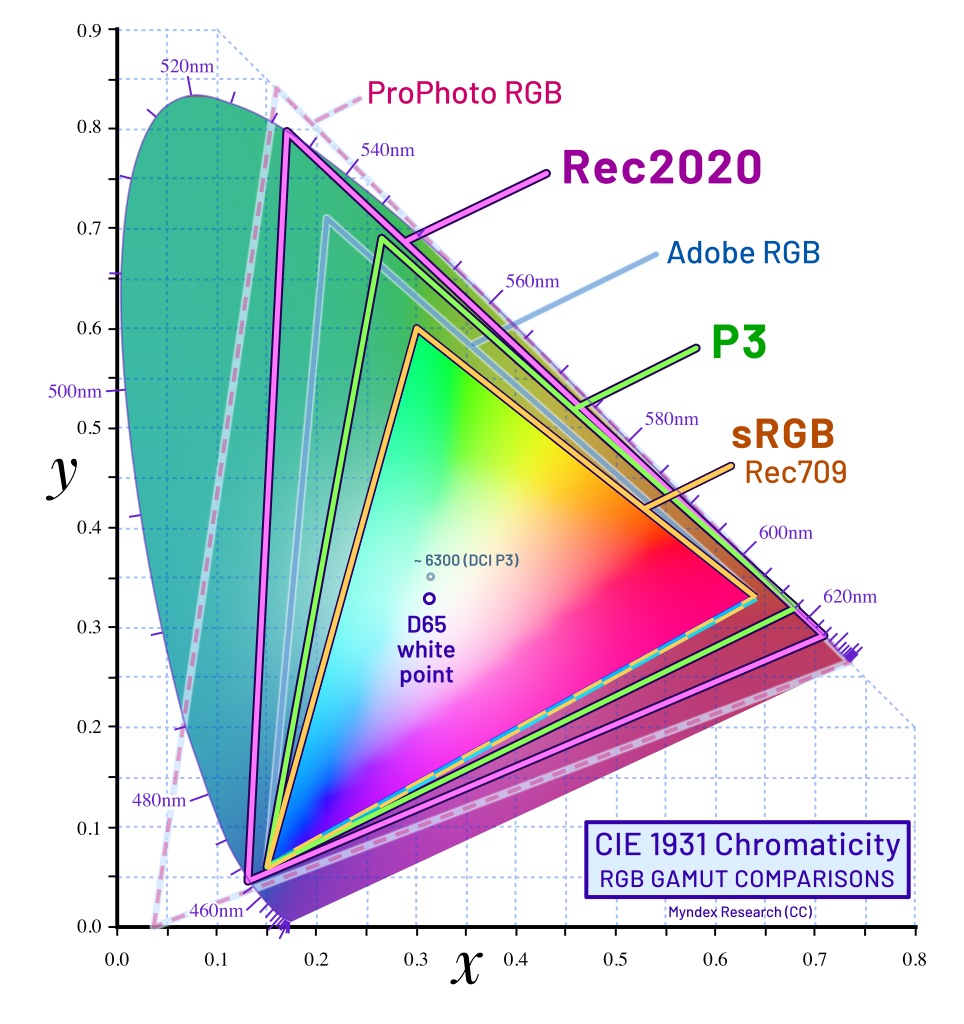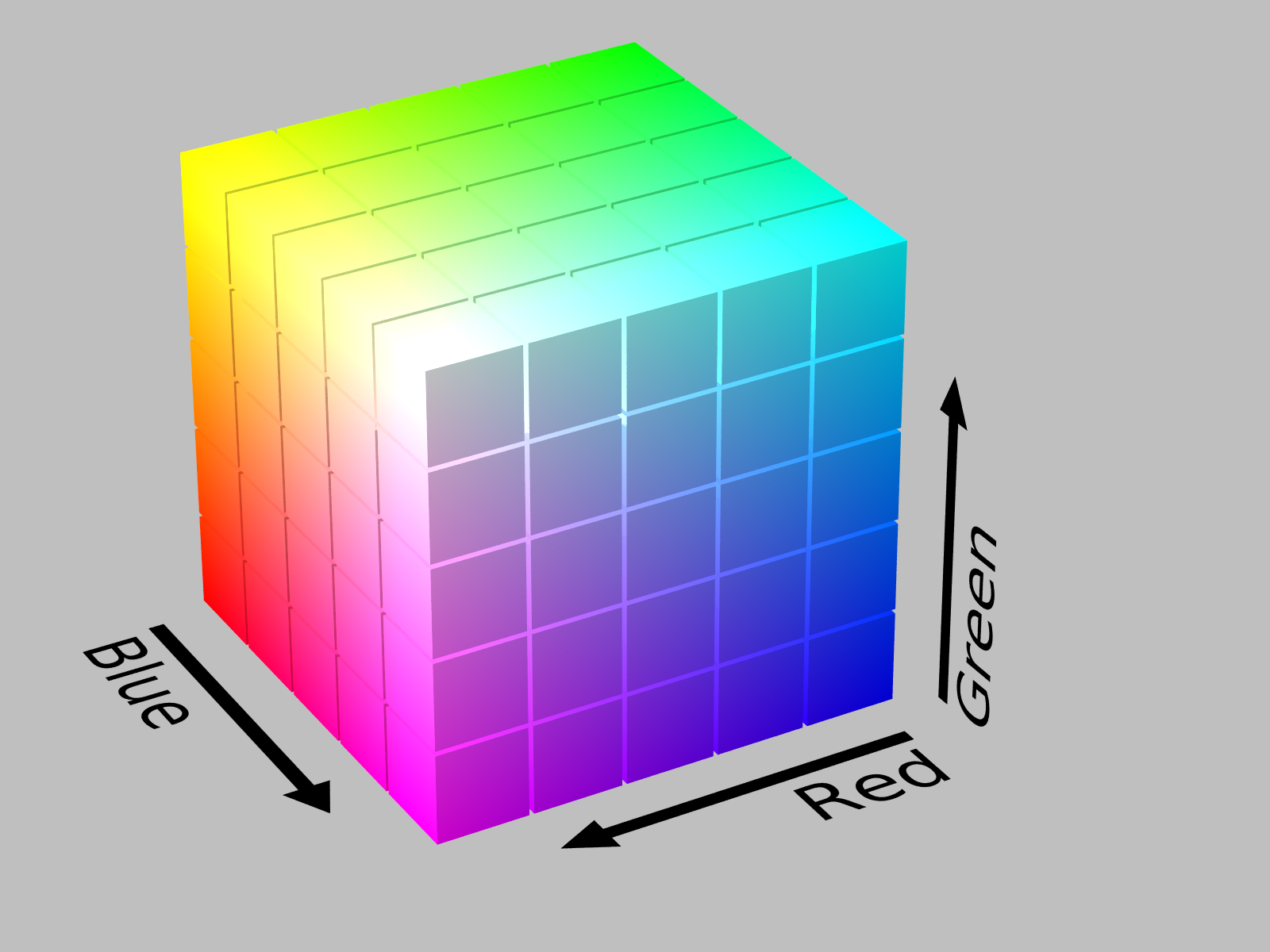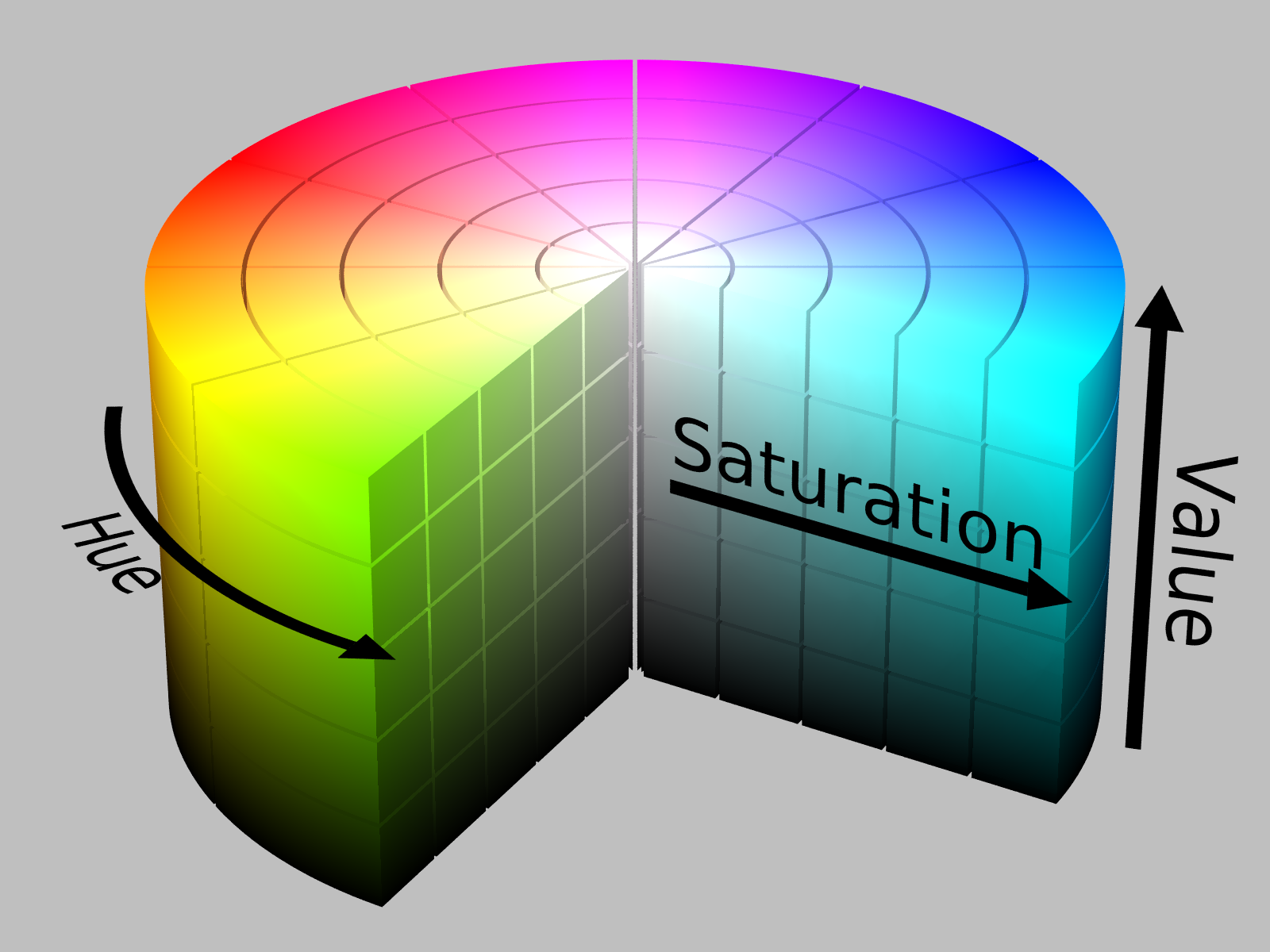OVERVIEW
Think of light as waves traveling through space; when these waves enter your eyes you may perceive colors and what colors you see, and if you see them at all, depends on the frequency of the light waves.
One way to visualize the colors that are visible to humans is by using something called a color gamut. The primary purpose of a color gamut is to convey how many colors a specific input device, like a camera, or a specific output device, like a display, can capture or present.

The horseshoe-shaped area of the image represents the colors, or to be precise, the chromaticities, in CIE chromaticity coordinates, that are visible to the human eye. A chromaticity is basically a color disregarding its luminance.
The colored triangles represent a subset of these colors, referred to as color spaces. For instance, there is one color space named sRGB. Although sRGB does not cover all the chromaticities visible to humans, it is still a widely used color space and works well to represent colors for a lot of scenarios.
There are other color spaces that cover more chromaticities, such as Rec. 2020. The gamut for Rec. 2020 is larger than the gamut for sRGB and can thus represent a wider range of colors. One may wonder why sRGB is ever used instead of Rec. 2020, but to represent all colors inside the Rec. 2020. gamut, without sacrificing accuracy, you would need to use more bits per pixel, ie, more data. More data means that storage will require more HD space, and it also means that more data needs to be processed during playback.
To know what color should be considered as "white" for a specific color space, the color space also defines something called a white point. In the image above there are two different white points, one labeled D65 used by Rec.2020, Rec.709 and sRGB, and another one labeled ~6300 used by DCI-P3.
The colors inside a color gamut can be represented with something called a color model, which is a numerical representation of a set of colors. One of the most common color models is RGB where you combine a red, a green and a blue numeric value to represent a color. These three individual values are also referred to as color channels.

Another common color model is HSV where you combine Hue (base color), Saturation (intensity) and Value (brightness) to represent a color.
